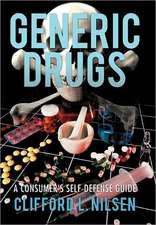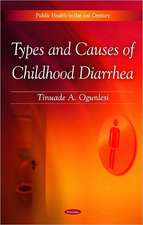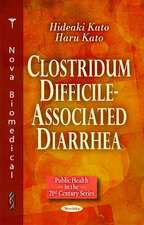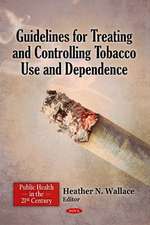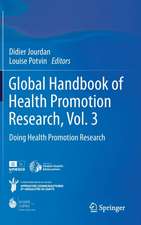Controlling Chemical Hazards: Fundamentals of the management of toxic chemicals
Autor R.P. Cote, P.G. Wellsen Limba Engleză Paperback – mar 2012
Preț: 370.94 lei
Preț vechi: 390.46 lei
-5% Nou
Puncte Express: 556
Preț estimativ în valută:
70.98€ • 74.31$ • 58.73£
70.98€ • 74.31$ • 58.73£
Carte tipărită la comandă
Livrare economică 05-19 aprilie
Preluare comenzi: 021 569.72.76
Specificații
ISBN-13: 9789401168519
ISBN-10: 9401168512
Pagini: 336
Ilustrații: XXII, 310 p.
Dimensiuni: 155 x 235 x 18 mm
Greutate: 0.47 kg
Ediția:Softcover reprint of the original 1st ed. 1991
Editura: SPRINGER NETHERLANDS
Colecția Springer
Locul publicării:Dordrecht, Netherlands
ISBN-10: 9401168512
Pagini: 336
Ilustrații: XXII, 310 p.
Dimensiuni: 155 x 235 x 18 mm
Greutate: 0.47 kg
Ediția:Softcover reprint of the original 1st ed. 1991
Editura: SPRINGER NETHERLANDS
Colecția Springer
Locul publicării:Dordrecht, Netherlands
Public țintă
ResearchCuprins
1 The nature and scope of the toxic chemicals issue.- The scope of the issue.- The nature of the issue.- Strategic elements.- References.- 2 The environmental fate of organic chemicals.- Transport and transformation in the environment.- Environmental distribution and fate analysis.- Physico-chemical data required for environmental distribution and fate analysis.- Conclusions.- References.- 3 Basic toxicological considerations.- Toxicity, hazard and risk.- Factors which affect toxicity.- Types of effects.- Concentration (dose)—response relationships.- Toxicity testing.- Summary.- References.- 4 Ecotoxicological considerations.- Some principles of ecotoxicology.- Distinguishing ecotoxic effects.- Environmental monitoring and assessment.- Community and ecosystem toxicity testing.- Ecological risk assessment.- Conclusions.- References.- 5 Integrating effect and exposure information: an industrial viewpoint.- History of risk assessment.- Risk assessment systems.- Risk assessment and risk management.- Distinctions between toxicity, hazard and risk.- The integration of effects and exposure analyses.- Risk assessment and human health.- Risk assessment of chemicals in the environment.- Examples of risk assessment.- Conclusions.- References.- 6 Control strategies and technologies.- Control strategies.- Control technologies.- Conclusions.- References.- 7 Occupational and environmental health linkages.- From science to policy: accounting for historic inaction.- The historic links between occupational and environmental hazards.- Two approaches to occupational health protection.- Conclusion: responsibility for the wider environment.- References.- 8 The economic perspective.- Economics and externalities.- Linkages between the economic system and the environment.- Economic valuationof the environment.- Trading off: cost—benefit analysis and environmental impact assessment.- References.- 9 The legal perspective.- Toxic chemicals and common law.- National legislation.- International initiatives.- Conclusions.- Notes.- References.- 10 The social and political perspective: an environmentalist’s viewpoint.- A case study: the story of Canning, Nova Scotia.- The context for citizens’ concerns about chemicals.- The public perspective: a variety of interests.- The moral dimension of values conflict.- Risk and risk analysis.- Developments in the decision-making processes concerning toxic chemicals.- References.- 11 The comparative political economy of regulating chemicals.- The regulatory cycle and contending views of regulatory speed and lag.- Markets and the political economy of interests seeking and resisting regulation.- Regulation and federalism.- Regulation and interdepartmental relations.- Ministers, symbolic politics, public opinion and the mass media.- Compliance and monitoring: the thin line of implementation.- Information and the regulatory process: concealing and revealing.- Science and technology in regulation.- References.- 12 Managing toxic chemicals: a government viewpoint.- Elements of risk and its management.- Comparisons of risk.- Risk acceptability.- Risk and benefit.- Management strategies.- Conclusions.- References.- 13 The future of toxic chemicals management.- Predictability of effects and exposures.- Control strategies.- Disciplines and interests.- Economic incentives and the market.- Fragmentation.- The international dimension.- Information.- Conclusions.- Selected readings.
Recenzii
Any new book whose preface ends: Comments and criticism from all readers are welcomed gets off to a good start, and the brief biographies of its chapter authors, drawn from industry, academia and government, leave us in no doubt of their qualifications and experience for the job... The styles of the chapers are very individual, ranging from the very dry and scrupulously comprehensive to the colloquial, not to say snappy... There are really no dud chapters...the editors, contributors, and publishers have done a very good job.Marine Pollution Bulletin.; The content is authoritative, the scope of the book is useful to researchers, consultants and specialists in the field, many of whom may need to broaden their perspective on the subject. - Chemistry in Britain


